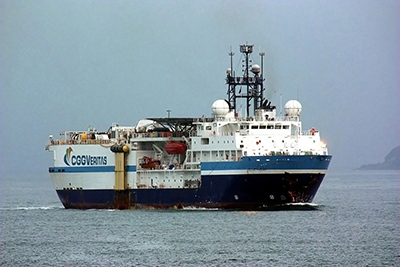Oceanic Phoenix, one of the CGG offshore oil exploration vessels, was faced with a significant problem. The tapered roller bearings of the reduction gears used in the power transmission chain undergo an alarming level of vibrations: 20 mm/s RMS instead of the recommended 7 mm/s. These vibrations cause the bearings to fracture, as well as premature damage of pinion teeth. Consequently, Bernard Marullaz Senior Technical Advisor at CGG, called on Cetim. The propulsion system is composed of two shafts, each of which features a variable pitch propeller. Each shaft is driven by two 2 MW electric motors via a reduction gear which decreases the rotation speed of the motors from 900 to 130 RPM. This redundant architecture must allow the vessel to operate in degraded mode in the event of a failure of one of the two systems. Despite this, a defect occurred.
No shutdown during operation
Two actions by Cetim during technical downtimes of the vessels helped to identify the cause of the failure. The calculation, confirming the assumptions drawn from the measurements, revealed that the strains of the housing are responsible for excessive vibrations, fracture of the bearings and premature teeth wear. With regard to the teeth, it seems that these strains cause misalignment which causes an excessively significant load to be applied to the circumference of the teeth, resulting in their damage.
Two solutions are possible: reconstructing the shaft line or solidifying the housing. The first solution is extremely expensive and the second would put the vessel out of operation for an excessively long time. The alternative offered by Cetim: adapting the teeth to the consequences of the strains on the housing. In other words, finding a solution whereby even if the strains are present, the loads on the pinion are distributed at the right place in the centre of the teeth. This is what was done. The excessive vibrations have fully disappeared. The bearings are no longer affected and the teeth are no longer subject to rapid wear.



